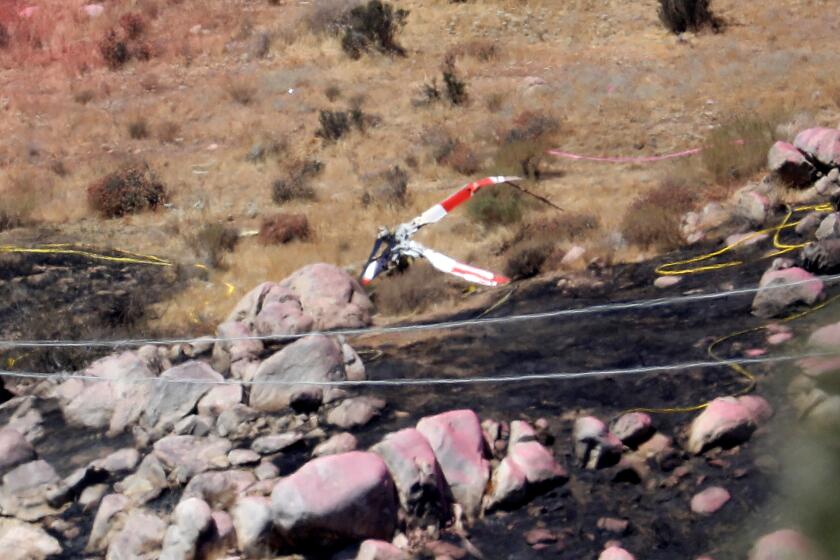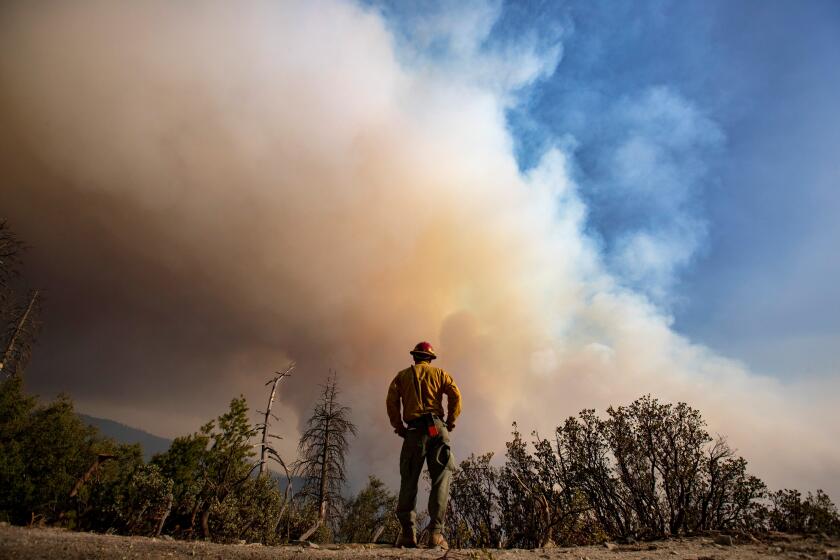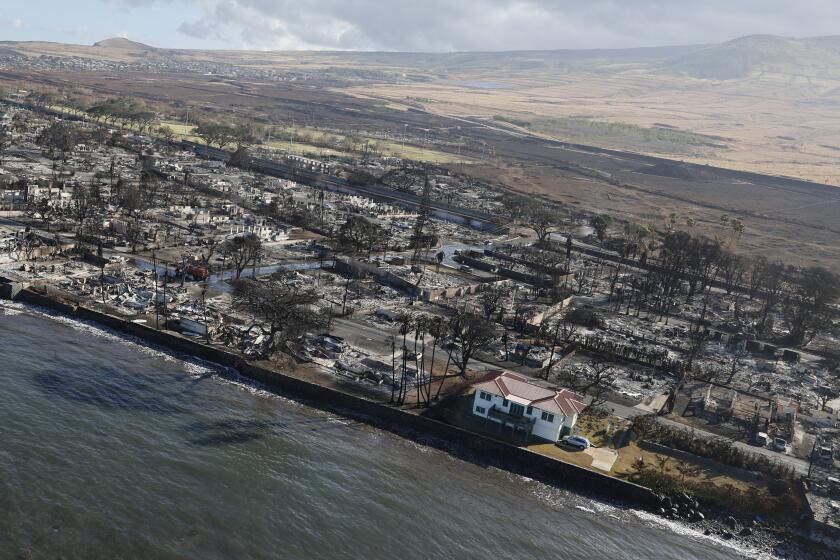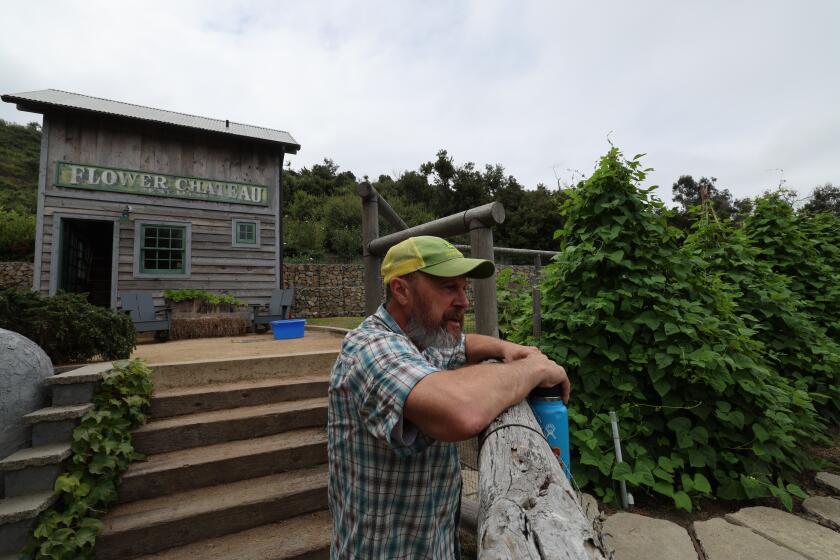A climate scientist wanted to start a debate in academia. He set off a bigger firestorm
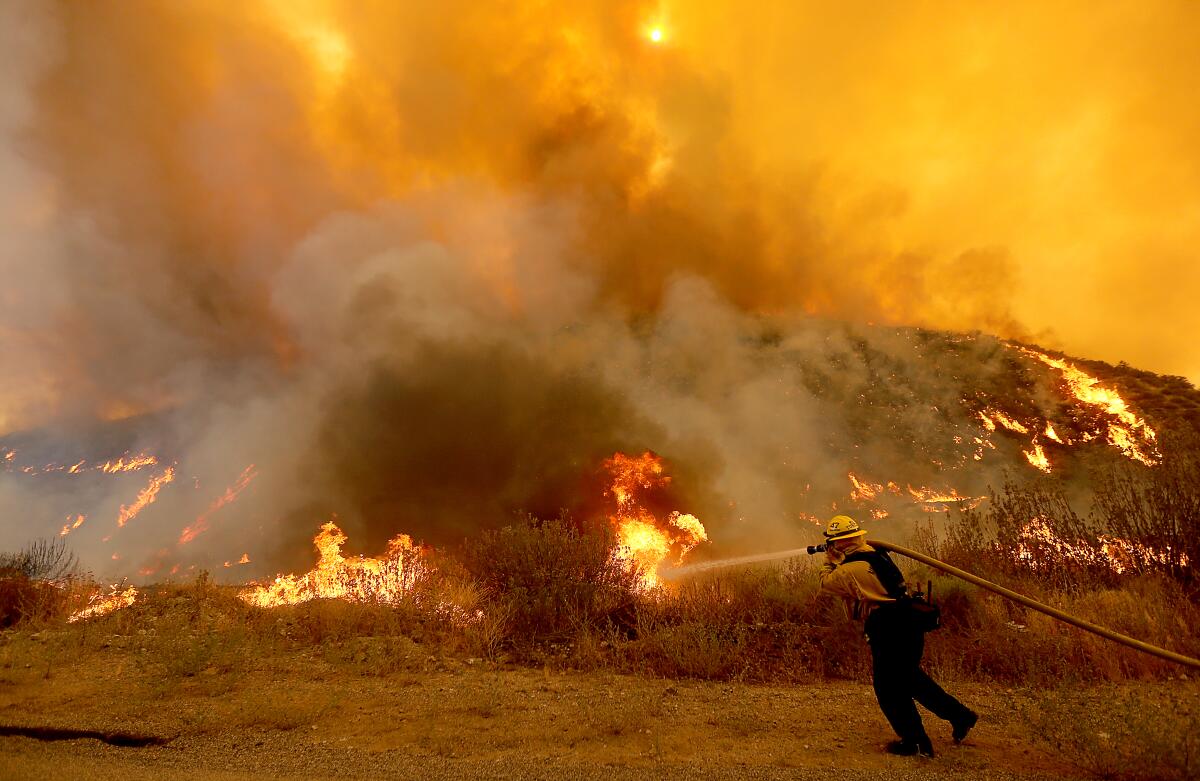
- Share via
For climate change deniers, it was confirmation of a long-held suspicion: Scientists cannot be trusted.
Days after publishing research that found global warming had boosted the risk of fast-growing California wildfires by 25%, scientist and lead author Patrick T. Brown announced that he’d withheld the full truth to maximize the article’s chances of being published in the journal Nature.
“The paper I just published — ‘Climate warming increases extreme daily wildfire growth risk in California’ — focuses exclusively on how climate change has affected extreme wildfire behavior. I knew not to try to quantify key aspects other than climate change in my research because it would dilute the story that prestigious journals like Nature and its rival, Science, want to tell,” wrote Brown, co-director of the climate and energy team at the Breakthrough Institute, in Berkeley.
Brown also wrote that he’d selected a metric and timeframe to study that weren’t the most useful, but generated the largest numbers quantifying the impact of climate change.
While intended mostly for the insular world of academia, Brown’s comments have ignited a firestorm of controversy that has spread far beyond the confines of science journals and has exposed the researcher to both praise and condemnation. They also come at a time when public confidence in science research is declining, particularly among Republican voters.
Conservative media outlets seized on Brown’s statements as evidence that scientists lie about climate change in order to advance liberal political orthodoxy. Some fellow researchers said his comments speak to a larger problem in the scientific community, in which a handful of high-profile journals can play outsize roles in advancing researchers’ careers and communicating their findings to journalists, policymakers and the general public.
One of two firefighting helicopters involved in a fatal midair collision last week lacked an electronic warning device that alerts pilots to nearby aircraft.
Others, including at least one of Brown’s co-authors, say they were surprised or even baffled by his comments. The paper was entirely clear about which factors were considered and which were excluded, they said, and there was no sleight of hand involved.
For its part, Nature said it was “carefully considering the implications” of Brown’s stated actions, which its editor said reflect poor research practices. “The only thing in Patrick Brown’s statements about the editorial processes in scholarly journals that we agree on is that science should not work through the efforts by which he published this article,” read a statement from Magdalena Skipper, the journal’s editor in chief.
To a number of observers, Brown’s comments were disturbing not because they suggested that he distorted evidence, but because they call into question whether the process of scientific debate and organized skepticism is compromised more broadly.
“The fact that a scientist would choose a particular metric to make the numbers look more impressive suggests that there is a quite unhealthy conflation within scientific papers of the scientific concerns and the policy concerns, or impact concerns,” said Daniele Fanelli, an assistant professor in research methods at Heriot-Watt University in Scotland who specializes in scientific misconduct and bias.
“To any extent this is happening in this or other fields, it should worry us because it’s to the detriment of the overall rigor and unbiasedness of the process,” he said.
In an interview with The Times, Brown seemed taken aback by the widespread attention his writings had received. He said his inbox has been flooded with hate mail, but also with positive responses from other researchers who said he expressed things they’ve been thinking but would never say.
Global warming is ratcheting up the risk of extreme wildfire growth in California and will continue to do so for decades, even if emissions are reduced.
Brown emphasized that he didn’t manipulate data or stage a hoax, and that he stands by the research. He simply used it as an example to point out issues with the publication process and the field of climate science, which he fears has become less about understanding the world and more about warning people of the dangers of climate change, he said.
“I’m calling out our paper but it’s a completely normal paper,” he said. “There’s nothing wrong with the paper itself. All of the facts and the caveats that we don’t look at things other than climate — it’s all right there in broad daylight.”
Still, Brown said, since he spoke out, conservative outlets have been lining up to platform him. He’s turned down interviews with “basically every Fox News show,” as well as Newsmax and One America Network, he said.
“That’s really unfortunate because that’s not the audience I’m trying to reach here,” he said. “I’m trying to reach my own research community. I’m trying to reform science from within.”
Brown’s study found that climate change has ratcheted up the risk of explosive wildfire growth in California by 25%, in the aggregate. He and his co-authors came to this conclusion by analyzing nearly 18,000 fires that ignited in California between 2003 and 2020 and using machine learning to simulate how those fires would behave under preindustrial conditions, as well as a host of potential future conditions.
With the exception of temperature, the researchers held everything about historical conditions constant. Their goal was to isolate the influence of temperature, and its impact on aridity, on day-to-day wildfire behavior.
But while it’s common practice to consider climate change apart from other factors, doing so is unrealistic and results in a conclusion that’s far less meaningful, Brown said. In this case, he and his fellow researchers did not account for changes in ignition patterns and vegetation growth, both of which have worsened wildfire behavior over time, he said.
“I knew that considering these factors would make for a more realistic and useful analysis, but I also knew that it would muddy the waters and thus make the research more difficult to publish,” Brown wrote.
Disasters like the Lahaina fire are becoming increasingly likely as warmer temperatures, development, and land management policies create conditions ripe for fire.
Brown and his co-authors analyzed instances in which fires grew by more than 10,000 acres in a day, a metric that is difficult to translate into action, he said. They also looked at the impacts of climate change since the start of industrial revolution rather than focusing only on recent history. Both choices served to generate the most “eye-popping numbers” supporting the impact of climate change, he wrote.
“I just think that what comes out of that on the other end, in terms of what’s communicated to the public, is misleading in terms of how large the climate change impact is relative to everything else,” he said. “I also think that it diverts attention away from direct solutions or adaptation strategies on the ground in the here and now.”
Those could include things like installing power lines underground or performing more prescribed burning and thinning treatments to cut down on the amount of vegetation that fuels fires.
“There’s a taboo against adaptation in our community, I think, because it’s considered to be in conflict with mitigation,” Brown said. “It’s like, ‘Oh, the bad people talk about adaptation when the right solution is to focus exclusively on climate policy that reduces emissions.’”
Brown’s complaints, however, have left some researchers cold. Multiple scientists disputed his description of the climate science field as being overly focused on findings that speak to the need for emissions reductions, to the detriment of other solutions.
“I don’t understand what his issue is with his own paper,” said Neil Lareau, professor of atmospheric science at University of Nevada-Reno. “I find the whole thing really bizarre.”
A red-roofed house appears untouched amid the devastation of the Lahaina fire. Its owner says recent renovations may have helped make it fireproof.
Lareau said the episode was likely to fuel climate change denial conspiracies for decades.
“I don’t think that’s Dr. Brown’s intent,” he said. “I kind of trust that he’s probably coming from a place with some level of frustration about the scientific publication process, and it’s an imperfect process. But frankly, it’s the best system that we have.”
Even one of the paper’s co-authors, Steven J. Davis, professor of earth systems science at UC Irvine, doubted Brown’s assertion.
“I don’t think he has much evidence to support his strong claims that editors and reviewers are biased,” Davis wrote in an email. He added that he wasn’t involved in strategic decisions to exclude factors from the study, and that Brown’s comments took him by surprise.
“Keeping the focus narrow is often important to making a project or scientific analysis tractable, and I don’t consider that ‘leaving out truth’ unless intended to mislead — certainly not my goal,” he wrote.
Experimental science controls for certain variables, and it’s in the nature of the discipline for scientists to decide to look at some but not others, said David Rettinger, president emeritus of the International Center for Academic Integrity and applied professor of psychology at the University of Tulsa.
“Every scientific study in the history of scientific studies doesn’t include the whole story, for the simple reason that there’s no such thing as a simple cause of anything,” he said.
The key question is whether a reasonable reader or reviewer of the paper would know that the focus was intentional and that things that were omitted were done so systematically, he said.
In that respect, Brown and his co-authors fulfilled their obligations, Fanelli said.
“Any climate scientist who reads this paper is able to understand what he’s talking about and is able to evaluate the data,” he said. “There’s no misleading there.”
Natural disasters devastate certain pockets of Southern California on a regular basis. So why don’t people leave?
But deciding what to leave out and what to keep in is never easy, researchers said.
Max Moritz, Cooperative Extension wildfire specialist at UC Santa Barbara, said he doesn’t think it’s a frequent occurrence that scientists intentionally simplify their work or omit data for the sake of appearing in high-profile publications. Simplified studies and models more often result from data limitations, and short-form, high-impact journals tend to leave little room for much discussion of these limitations, caveats and complexities, said Moritz.
But it’s true that studies with nuanced findings and messy policy ramifications make for more challenging stories to tell, which may make them less likely to be picked up by high-profile journals and media outlets, he said.
“So as scientists, we often are faced with that trade-off: Can you simplify the messaging about a complex study just so we can get the important message out about the most salient and actionable points?” he said. “Those are some of the decisions that I think are challenging as a researcher.”
Moritz applauded Brown’s candor. The discussion of the challenges and personal decisions a scientist must make to get a paper out is a worthwhile one, he said.
“He’s calling out a problem that is real,” Moritz said. “I think that there’s a real gap between science and policy, and part of that path between science and policy often involves journalists and high-profile publications that catch the eye of journalists and give scientists a voice and a platform to get a message out there that’s important. And I think he’s calling attention to the fact that more nuanced, complex studies should also have the same opportunities.”

